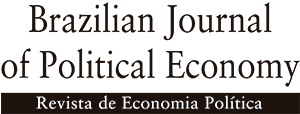In contrast with the inflationary finance story, inflation acceleration in Latin America has been explained as the result of the interaction of inflation dynamics and the frequency of wage adjustments. Accordingly, small inflation disturbances are connected with a shift from moderate to high inflation (or beyond to hyperinflation) though a mechanism that makes adjustment intervals in wage contracts endogenous. Rudiger Dornbusch (1986) labeled this process the "Pazos-Simonsen mechanism". In this note we summarize the basic contribution of both Felipe Pazos (1978) and Mario Henrique Simonsen (1983) and find crucial differences between their views on wage dynamics, specifically regarding the endogeneity of the time interval between wage readjustments. A remarkable affinity with Pazos's view on wage dynamics and inflation is found in an early and almost unknown essay written by Nicholas Kaldor in 1957 (inspired in his brief experience in Latin America).
Latin America; inflation; wage dynamics; Pazos-Simonsen mechanism











